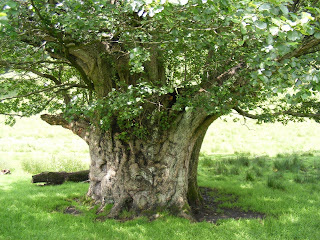Here we all are at the start of another new year, January can be a time for quiet reflection with the passing of the old year and start of the new. I’ve noticed recently that the Christmas presents I receive seem to have changed , gone are the ice axes and electric guitars to be replaced by scarves and this year my first pair of slippers. I never thought I would see the day when a Remington nasal hair trimmer would be quite a useful present , hours of endless fun ( they do ears as well you know !)
At the age of 49 though I am a youngster , a mere babe, compared to the venerable elders that are to be found in the British countryside , I ‘m talking about the characterful old veteran trees that are scattered through our woodlands and fields many of them 200 – 300 years old, some , much older. We are fortunate in the South lakes area to have a good number of these trees on National Trust land. To previous generations these trees were an important part of their economy or were objects of special spiritual or social interest.
Just like people, the older trees get the more interesting they become…. and just like people as they get older , things start growing in un-usual places , bits stop working and start dropping off ! This can result in veteran trees being host to a wide range of birds, insects , fungi and other plant life, and makes them worthy of extra attention and protection. In the last couple of years we have surveyed all our veteran trees around Coniston and Hawkshead , noted their condition and made recommendations for future management.
Some of the oldest and most interesting are ash pollards . A pollarded tree is a tree that has had the top cut off 8’ -10’ above ground level ( so that the sheep and cattle can’t eat the new growth ) new branches grow and then they will be removed every 20 years or so. A tree managed in this way can live for hundreds of years , and develops an unusual distinctive shape different to a tree that has been allowed to grow naturally .
These old pollards are often covered in mosses , ferns and lichens, their hollow trunks provide habitat for insects, and also provide nesting and roosting sites for many bats and birds. Sometimes other species of tree start growing in the bowls between the branches that fill with soil and water, so it is not un-usual to find a rowan or a birch tree growing out of an ash pollard. The wood from these ' trees on trees ', grown in the ‘ middle earth ‘ were supposed to have magical qualities and made particularly fine wands for witches and wizards apparently. For centuries the wood of ash trees was also used on a more practical level for tool handles, fences and for fuel and the foliage was fed to the sheep in winter.
The Trust is working not only to re-pollard many of these trees before their trunks split and rot , but is also creating new pollards, by cutting the tops off young ash trees. The recent spread of the ash dieback disease ( Chalara fraxinea ) to Britain
Paul Farrington
National Trust Ranger ( South Lakes )
Paul Farrington
National Trust Ranger ( South Lakes )


We offer a large selection of real magic wands, including hardwood magic wand, copper healing wands, subtle energy amulets, wizard kits and leather journals.
ReplyDelete
ReplyDeleteشركة نقل عفش بالمدينة المنورة
شركة نقل عفش بجدة
شركة نقل عفش بالرياض
شركة نقل عفش بالدمام
شركة نقل عفش بمكة
ReplyDeleteشركة نقل عفش
شركة نقل عفش | شركة نقل اثاث بجدة | شركة نقل عفش بالرياض
ReplyDelete| شركة نقل عفش بالمدينة المنورة | شركة نقل عفش بالدمام
شركة نقل عفش بالدمام